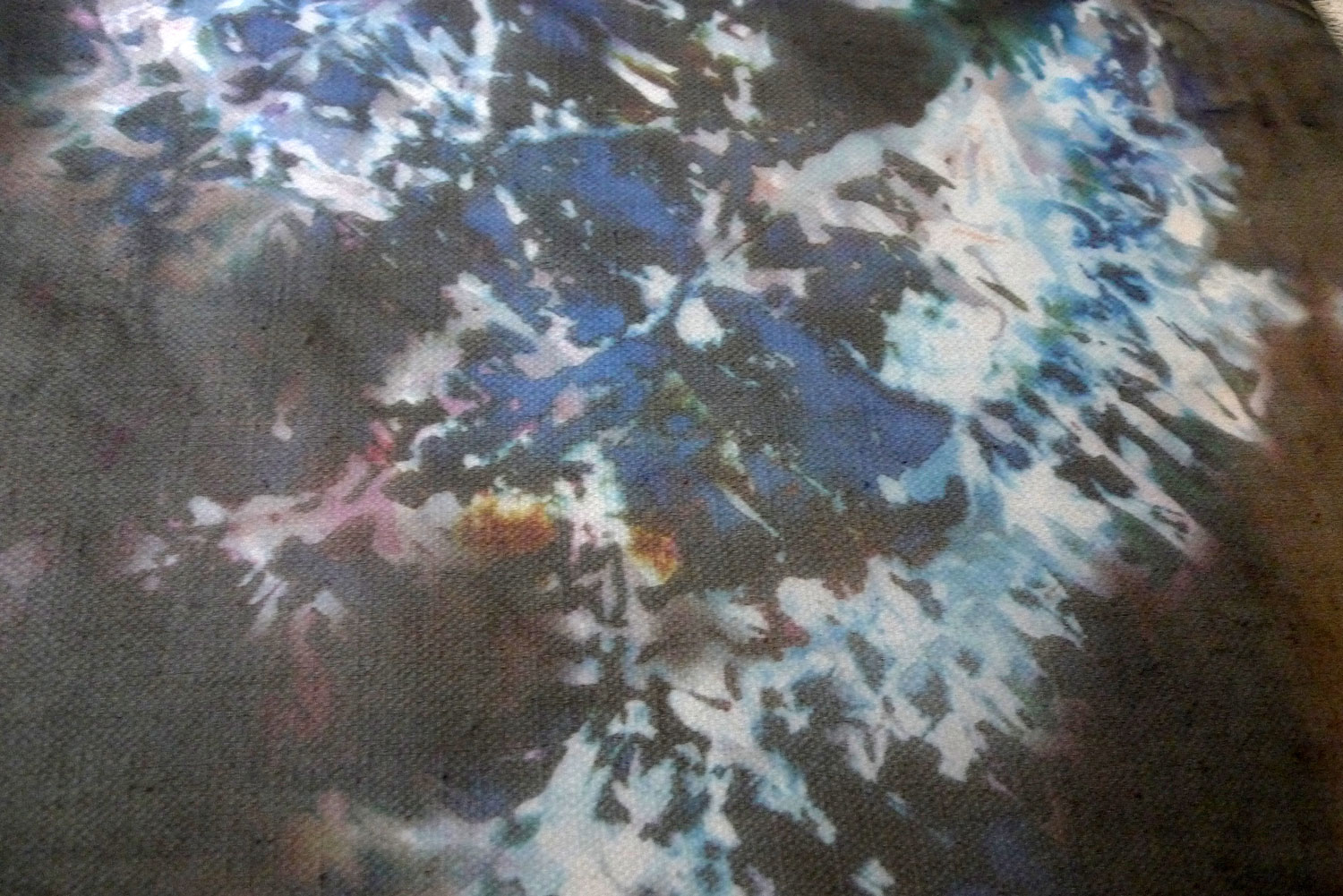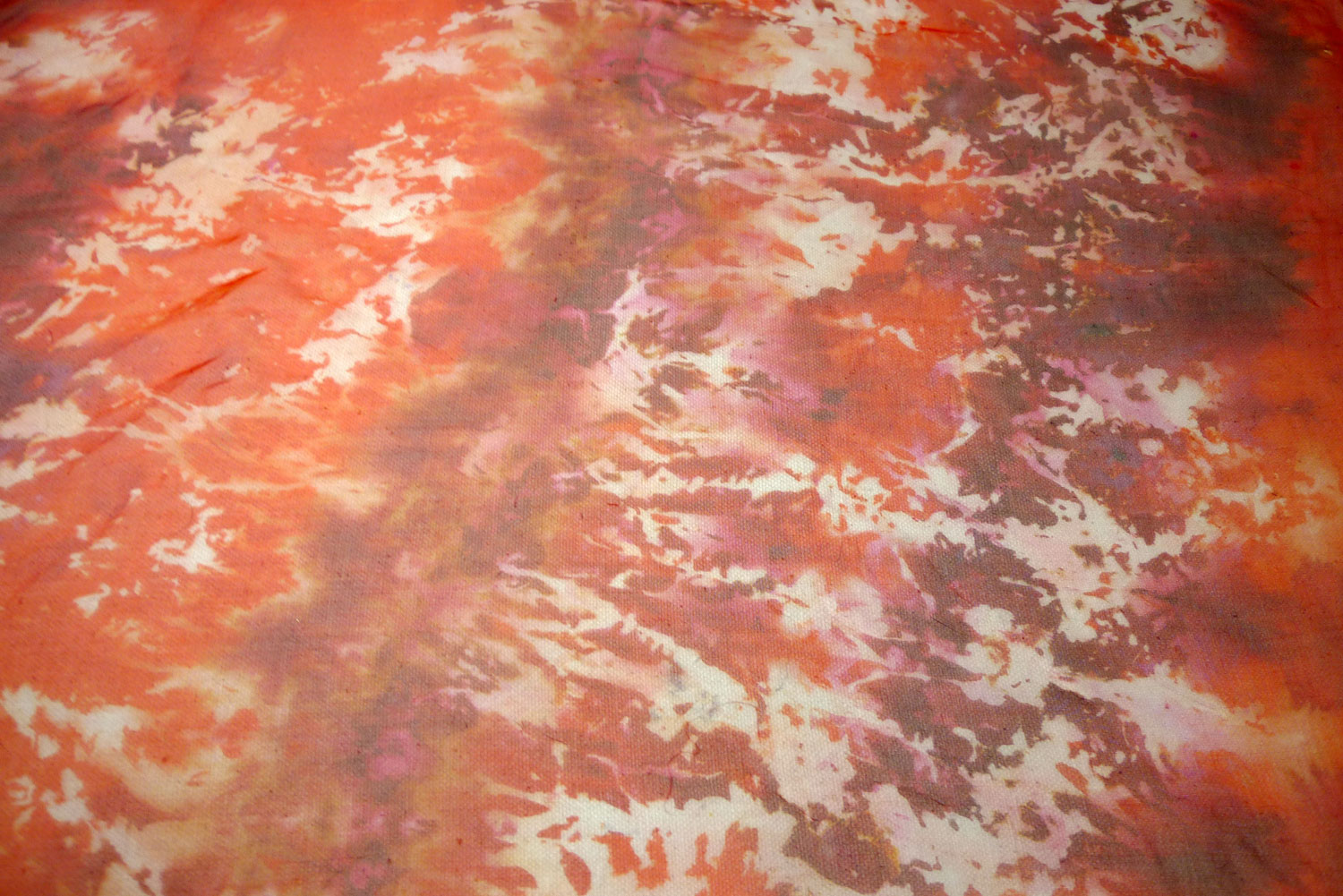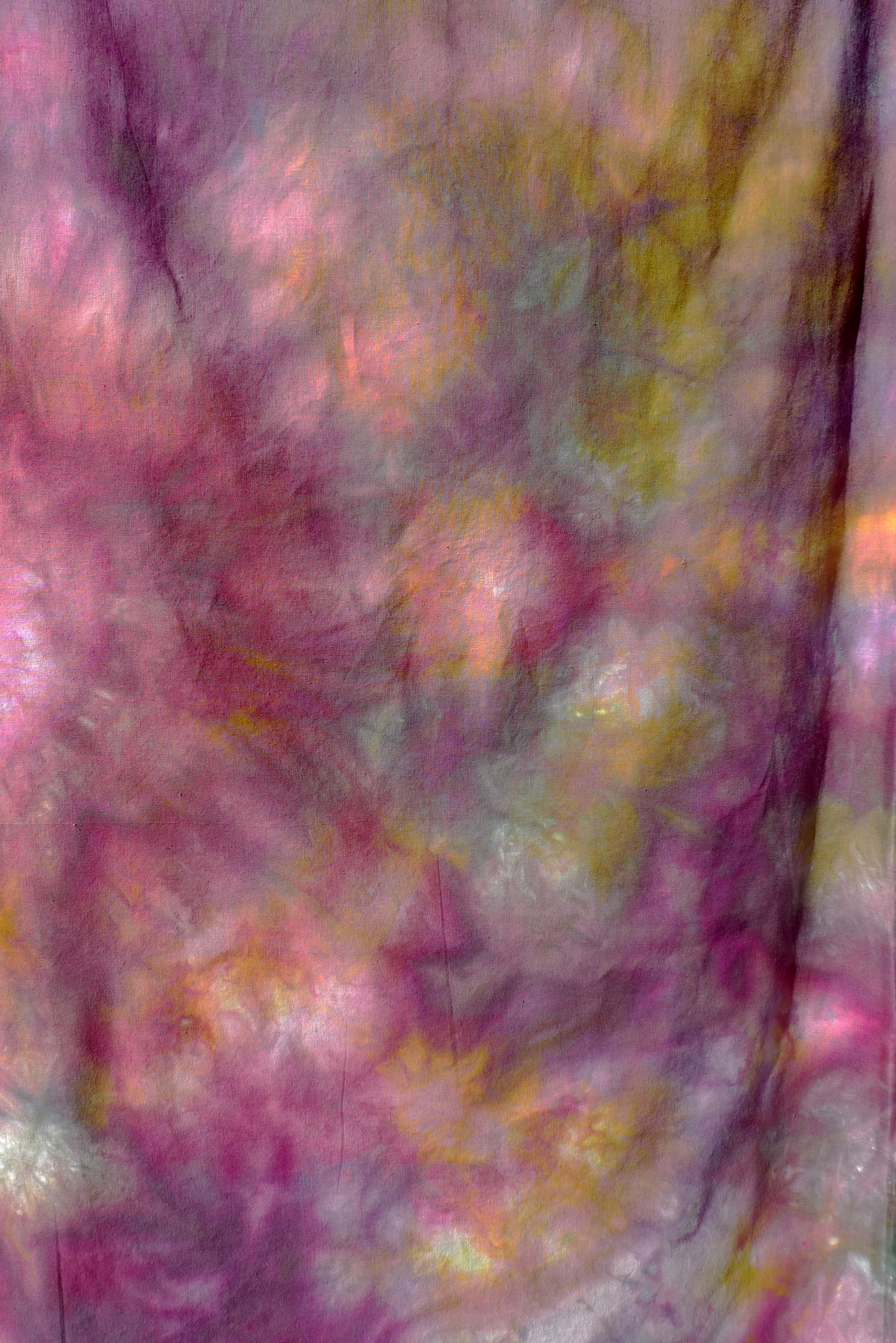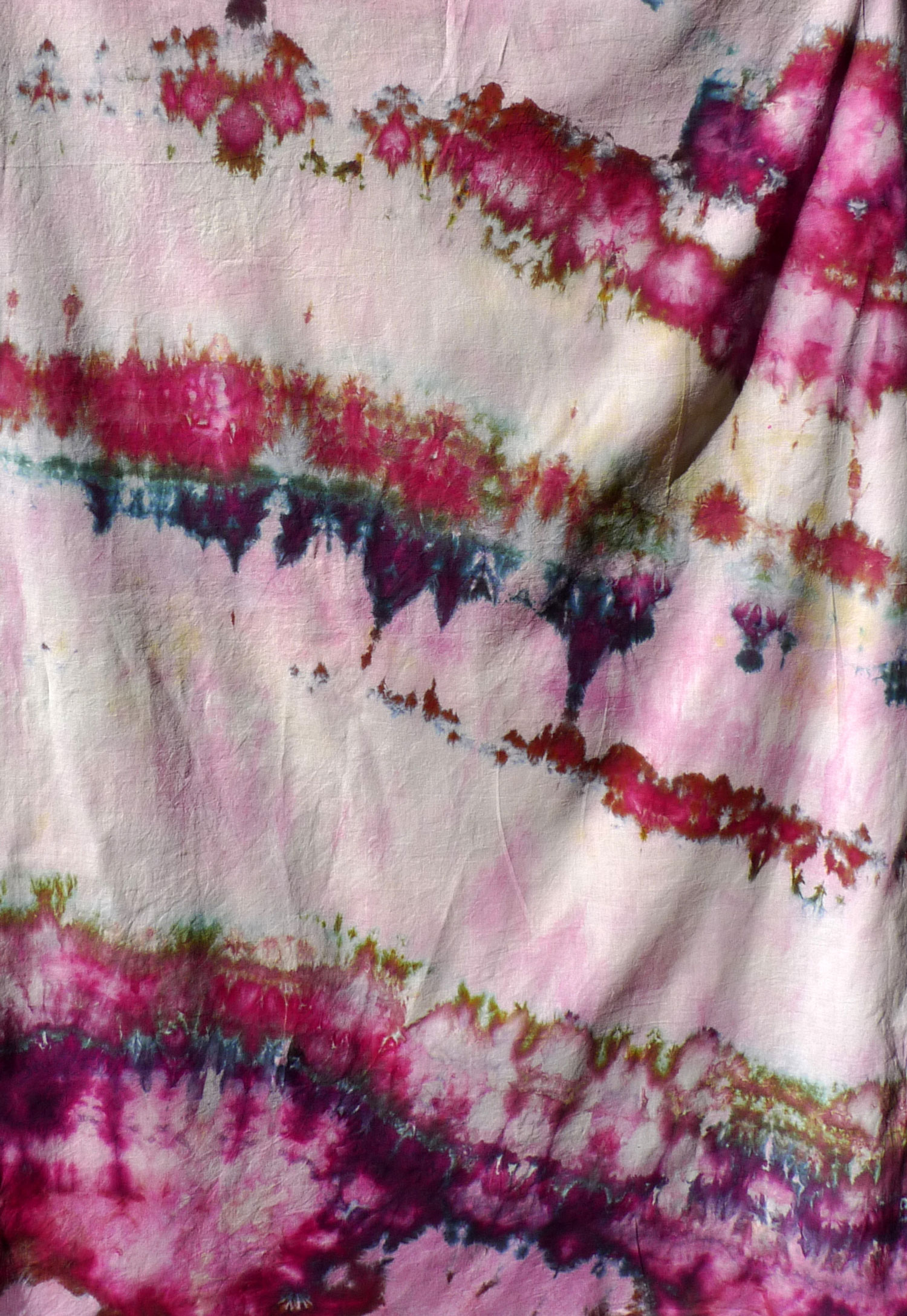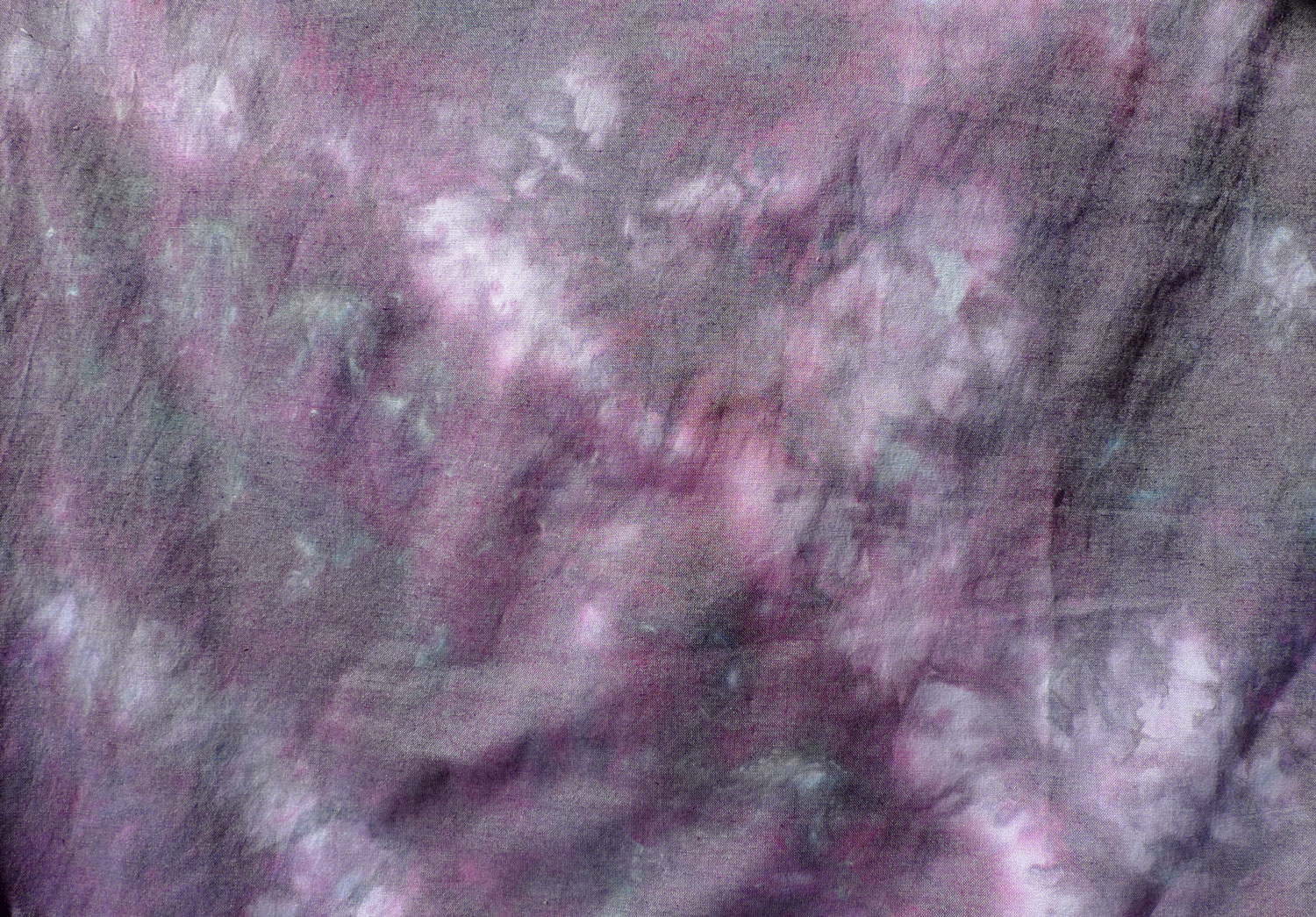Saturday was a fabulous day of experimenting with ice dyeing with Sheryl LeBlanc and Judith Quinn Garnett.
The process steps we referred to for this experiment were from Linda Johansen.
Prewash fabric with Synthrapol if it is not PFD fabric.
Make a Soda Ash Solution:
- 1 Cup of Soda Ash
- 1/2 Cup of Salt
- 1 Gallon (16 cups) warm water
Stir until dissolved.
Soak the fabric in the Soda Ash Solution for 10 minutes. Wring out fabric. Scrunch, pleat, or fold the fabric as desired and shove it in a small (32 oz. ideal) clear container. Clear containers allow you to see the dye penetration. The tighter the fabric is gathered the more crackling and resist. Break up a bag of ice in to small pieces (as small as possible). Cover the fabric in the containers with a layer of ice. Immediately sprinkle dry MX dye powders on the ice (roughly 1/4tsp or more per color). Wait for the ice to melt. Rinse. Final wash in machine with Synthrapol.
I use Dharma's MX dyes primarily and have referenced my samples with their dye color numbers (unless otherwise noted as a ProChem Dye).
Silk Organza - Truffle Brown (135), Azure (56), Golden Brown (113)
Silk Organza - Truffle Brown (135), Azure (56), Golden Brown (113)
Silk Organza - Truffle Brown (135), Azure (56), Golden Brown (113)
Silk Organza - Musk Melon (ProChem 200), Deep Orange (6), Rust Orange (8)
Silk Organza - Musk Melon (ProChem 200), Deep Orange (6), Rust Orange (8)
PFD Cotton Sheeting - Brazil Nut (116), Buttescotch (ProChem 115), Truffle Brown (135)
PFD Cotton Sheeting - Avoacdo (33), Moss Green (134), Bronze (37)
PFD Cotton Sheeting -
PFD Cotton Sheeting -
PFD Cotton Sheeting - Maroon (16), Black Cherry (111), Fog (L-14)
PFD Cotton Sheeting - Bronze (37), Eggplant (115), Black Cherry (111)
PFD Cotton Sheeting - Gun Metal Grey (150), Charcoal (41), Storm Grey (Pro Chem 6160)
PFD Cotton Sheeting - Black Cherry (111), Plum (19)
